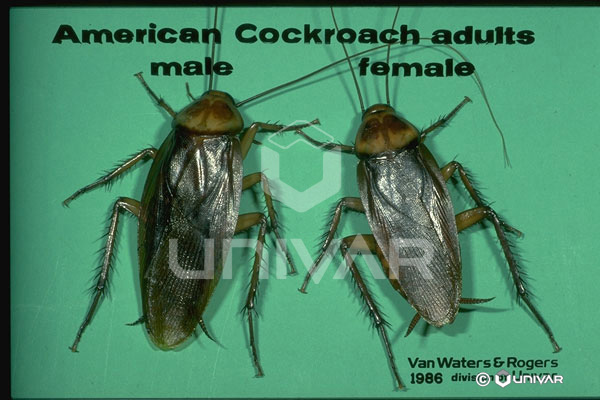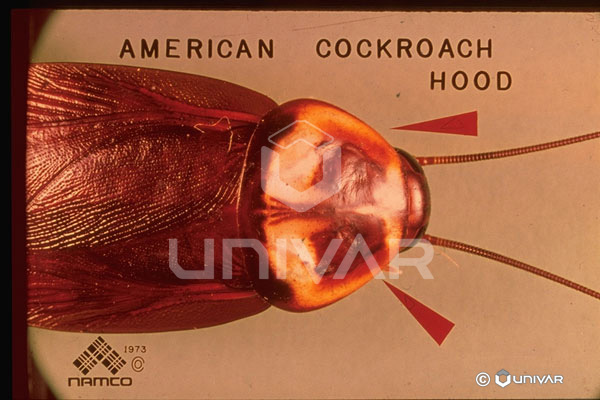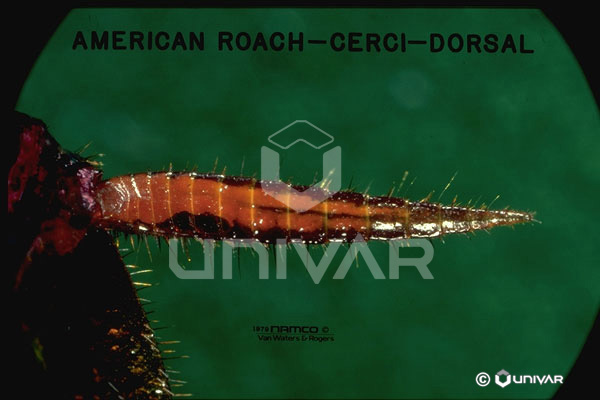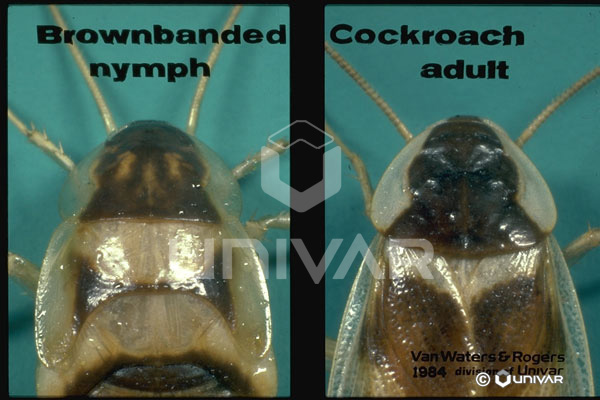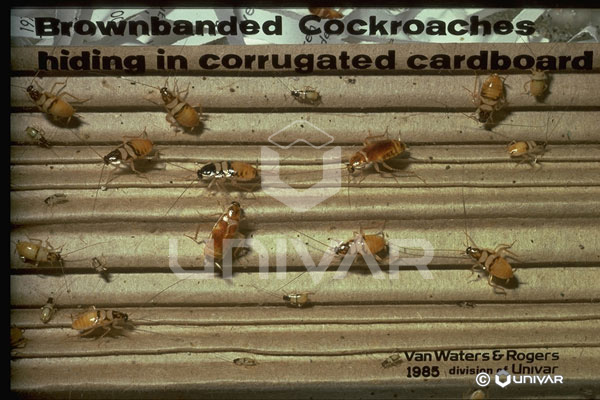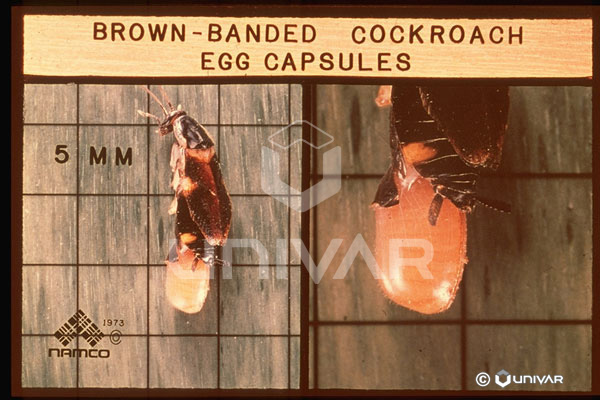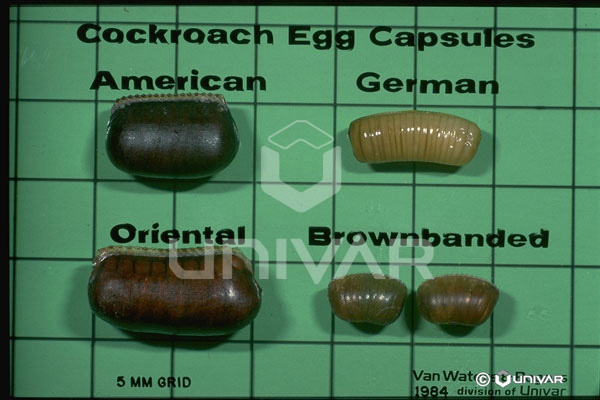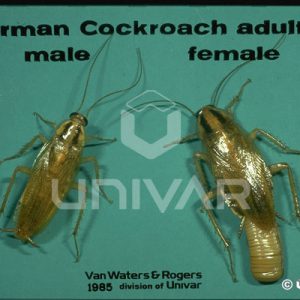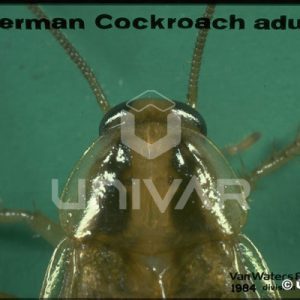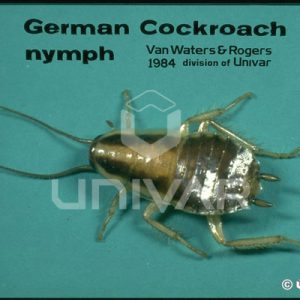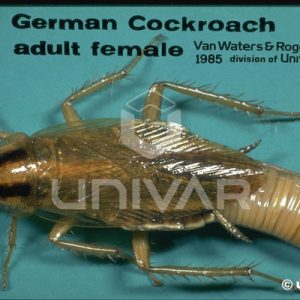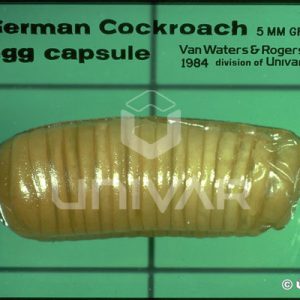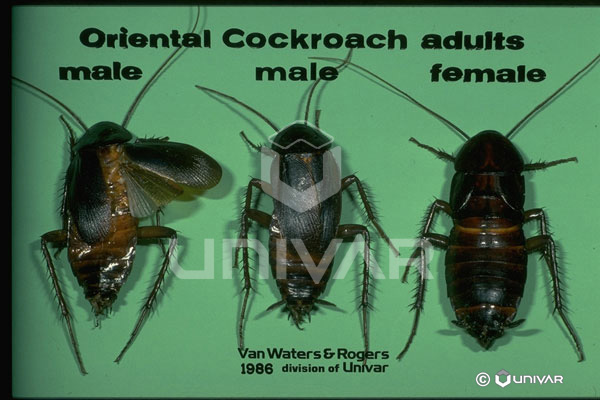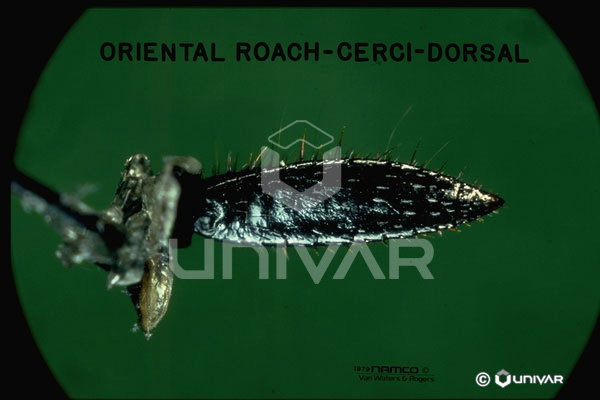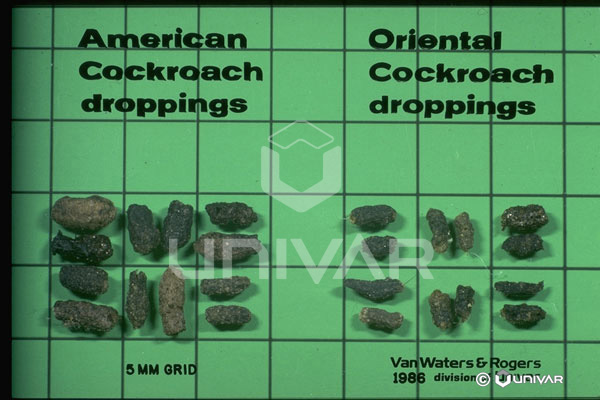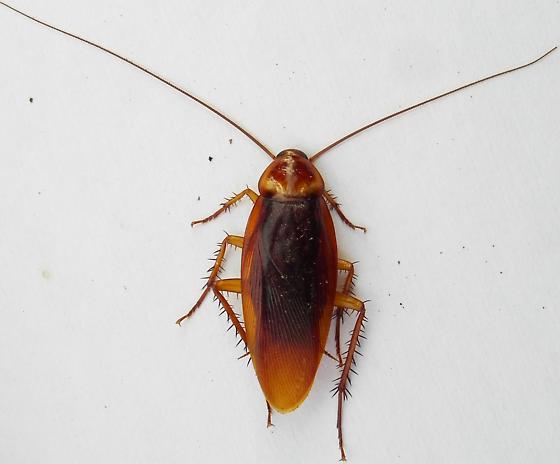
AMERICAN COCKROACH
Common Name: Cockroach – American cockroach
Latin Name: Periplaneta americana
Common Family Name: Blattid cockroaches
Latin Family Name: Blattidae
Other Names: Palmetto bug, Bombay canary
Origin: Possibly from northern Africa or Asia, but found worldwide for many centuries now. It occurs throughout the United States as a common indoor and outdoor cockroach, and in some areas may be more common than the German roach.
Biology: This species is common outdoors in landscape plantings, in sewers or storm drain systems, and in lower areas of buildings where moisture may be greater. It may inhabit storm drains in huge numbers, emerging through man-hole covers at night to invade buildings. They will feed on most carbohydrate or protein-based materials, including human hair or finger and toenails. Each female produces around 10 egg capsules, carrying the capsule for a day or two and then carefully placing it in a protected location. Each egg capsule has an average of 15 eggs in it and these hatch in about 45 days. Development to the adult stage averages about 450 days but may take well over 2 years in colder climates. Adults live an average of around 1 year but potentially can live almost 3 years.
Identification: The American roach adult has fully developed wings and is capable of some flight, usually from an upper location to a lower surface. It is reddish brown with a yellow ring around the prothorax. Adults may be up to 1.5 inches long from head to tail, with extremely long antennae. The cerci are long and thin, a character that separates the nymphs of American roaches from those of Oriental roaches.
Characteristics Important in Control: Since this species is abundant outdoors, control begins with habit management in the outdoor areas. Removal of harborage sites under debris or piles of wood and discarded materials will reduce populations near a structure. Control of food and moisture sources outdoors and indoors is important. Granular insect baits are well accepted, and the use of a perimeter treatment with a residual insecticide will intercept many individuals who attempt to access a structure.
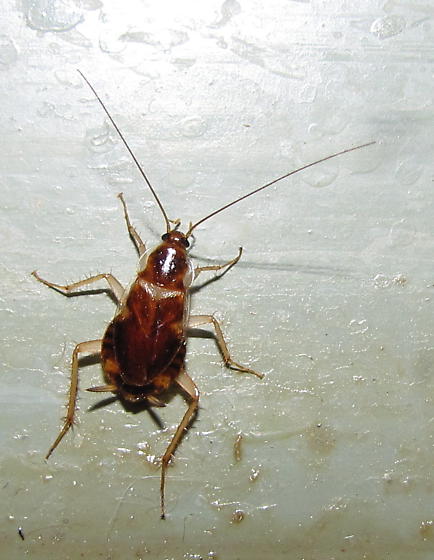
BROWN BANDED COCKROACH
Common Name: Cockroach – Brown-banded cockroach
Latin Name: Supella longipalpa
Common Family Name: Wood cockroaches
Latin Family Name: Blattellidae
Other Names:
Origin: Considered to be African in origin, but found in the United States around 1900 and now spread into all states. It is more common in warmer southern states than in the northern areas.
Biology: This roach species is found primarily indoors, where it may be as common in dry areas of the structure as it is in the kitchen or bathrooms. It has a low moisture requirement, allowing it to survive in many locations, and the females deposit their egg capsules within about one day of its development, sticking them to hidden surfaces in closets, behind drawers, within corrugated cardboard, or behind objects on the walls. Each capsule contains an average of 15 eggs, and development from egg to mature adult takes about 6 months. Males have wings that completely cover the abdomen, while the females’ wings are shorter, exposing the last few segments of the abdomen. Both sexes can fly. Because of the manner of hiding the egg capsules on materials, this species is easily relocated to new habitats.
Identification: The brown-banded cockroach is named for the two wide stripes running side to side on its thorax and abdomen, seen even through the opaque wings of the adults. Females have shorter wings than the males. Overall length is only about ½ inch, and the color is a yellowish brown in the males to a darker brown in the females. The top of the prothorax is a solid dark brown color.
Characteristics Important in Control: Elimination of habitat and access to voids is important, along with the removal of potential food sources. It must be kept in mind that these roaches can inhabit any room in a structure, and an inspection to discover and remove hidden egg capsules will be important. Crack and crevice applications of a residual insecticide are effective, along with the use of cockroach bait products near their harborage sites.
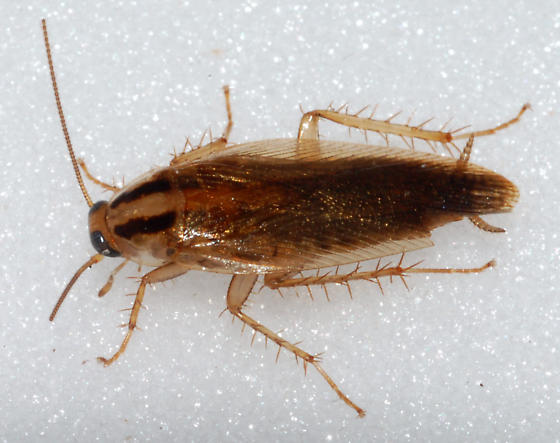
GERMAN COCKROACH
Common Name: Cockroach – German cockroach
Latin Name: Blattella germanica
Common Family Name: Wood cockroaches
Latin Family Name: Ectobiidae
Other Names: Steam fly, water bug
Origin: Believed to have originated in Eastern Asia and spread on the ships of the early spice traders.
Biology: The German roach is a nocturnal animal, that strongly avoids light, cannot fly, and in almost all situations will be found indoors. Infestations normally begin with the introduction of roaches in packages. The biological potential of this species is enormous, with females producing an average of 5 egg capsules in their lifetime, each with an average of 30 eggs in it. The time from egg to mature adult averages about 3 months, allowing 4 generations of the insects each year. Female adult roaches live for about 200 days. Females carry the egg capsule until one day before the eggs are to hatch, providing necessary moisture into the eggs. Her activity level is low while she is in this “gravid” stage. This species has a higher moisture requirement than many other species and is most likely to live near moisture sources and in humid areas. First instar nymphs often remain in hiding, feeding on the fecal material of other roaches. Older roaches are extremely variable in their diets, feeding on virtually any materials in a food environment. They may also nibble on human hair or fingers and toenails.
Identification: The German roach is typical of the genus Blattella, with a tan to brownish color, small size, and two dark, longitudinal stripes on its prothorax. Adults reach about ½ inch in length, with wings that reach the end of the abdomen in females and just beyond the tip of the abdomen in males. Neither is capable of flight. Nymphs begin as extremely small insects and without any hint of wings. However, they do have dark markings on the prothorax. This species may be distinguished from the Field roach by the color of the face, which is light brown in the German.
Characteristics Important in Control: Successful control relies heavily on habitat modification to eliminate food and water resources and to close access to harborage sites. It also is dependent on an inspection to discover all harborages that need to be treated or eliminated. Crack and crevice applications of a residual insecticide are effective, along with the treatment of voids with a void injector or dust application. Bait products introduced in the 1990’s have been highly successful against the German Roach.
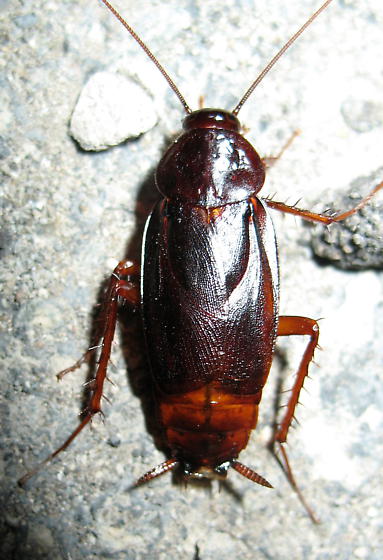
ORIENTAL COCKROACH
Common Name: Cockroach – Oriental cockroach
Latin Name: Ectobiidae Orientalis
Latin Family Name: Ectobiidae
Other Names: Water bug, water beetle, shad roach, black beetle
Origin: Believed to have originated in Africa, but now found throughout the world.
Biology: Oriental roaches inhabit damp locations such as crawl spaces under structures or underground water and sewage systems. Their travel through such unsanitary habitats increases their potential as disease vectors. It may be common in outdoor environments and enter a structure on its own, by crawling under doors or through other exterior openings. Females carry their egg capsules for about one day and then deposit the capsule in a secluded place. Each capsule has an average of 15 eggs, and the development from egg to mature adult takes about one year, although in some circumstances it has been observed to take about 2.5 years. The insects are nocturnal, avoid light, and neither sex can fly, although the male has well-developed wings.
Identification: These are large roaches, with adults reaching about 1 inch in length. They are very dark brown to black, with the females having an oval shape. The wings of the males do not reach the end of the abdomen, and the wings of the females are reduced to short stubs at the back of the thorax. The nymphs of this species are very similar to nymphs of the American roach but may be distinguished by their cerci. On the Oriental roach, the cerci are short and somewhat widened, while on the American they are long and thin.
Characteristics Important in Control: Since this species often enters structures by walking in or entering through drains of various kinds, entry points must be dealt with the exclude the insects. Removal of vegetation and harborage sites around the exterior of the building will reduce the presence near the structure. Granular insect baits appear to be very attractive to the Oriental roach, and applications of residual insecticides around building perimeters, in drain openings, or in sewer and storm system openings will help to control them.
